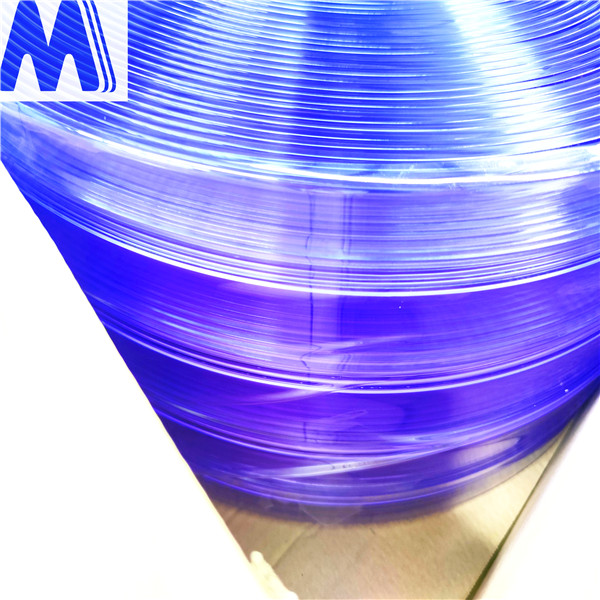Plastic curtain strips for cold rooms—save energy now?
A Field Note on Transparent PVC Strip Doors: What’s Working Now
If you work around loading bays or cold rooms, you already know how much mileage you get from plastic curtain strips. I still remember walking through a humming distribution center in Langfang—forklifts rushing past—yet the temperature and dust stayed surprisingly stable behind those clear flaps.

Product snapshot
Brand: WANMAO, from Houligezhuang Village, Langfang, Hebei, China. This is the High-Quality Transparent PVC Strip Curtain (also offered as a Transparent Ribbed Soft Door Curtain). To be honest, the ribbing helps reduce scratching in busy aisles; smooth is cleaner-looking in retail.
FOB price: $31.8–63.5. MOQ: 20 rolls. OEM/ODM welcomed. Free samples—many customers say that’s handy for matching thickness and transparency onsite.
| Parameter | Spec (≈ typical) | Notes |
|---|---|---|
| Type | Smooth / Ribbed / Flat | Ribbed resists abrasion in high traffic |
| Thickness | 1–6 mm | Choose thicker for larger openings |
| Width | 150–1400 mm | Common: 200/300/400 mm |
| Length | 50 m per roll / customized | Custom punching/hanging available |
| Color | Transparent, light blue, others | Tinted options for welding zones |
| Working temp | ≈ -20°C to +60°C (std), down to -40°C (low-temp grade) | Real-world use may vary with airflow |

How it’s made and tested
Materials: PVC resin compounded with plasticizers, stabilizers, and clarifiers. Methods: precision extrusion, water-bath cooling, rib embossing (if needed), slitting, edge rounding, and hole punching for hooks.
Quality checks: tensile strength per ASTM D638 (≈14–18 MPa), hardness per ASTM D2240 (Shore A 75±5), optical clarity via ASTM D1003 (low haze for clear grade), UV aging per ISO 4892 if requested. Compliance options: RoHS/REACH; food-contact grades may be made to EU 10/2011 or FDA frameworks on request.
Service life: typically 3–5 years indoors; 1–3 years outdoors without UV-stabilized grades. I guess it depends on forklift traffic and sunlight, as always.

Where plastic curtain strips shine
- Cold storage and food processing: reduce air exchange while allowing easy pass-through.
- Warehousing and logistics: dust, bird, and noise control; visibility for safety.
- Retail back rooms and supermarkets: temperature zoning without bulky doors.
- Light manufacturing and clean zones: draft control; anti-static variants available.
- Welding bays: tinted, UV-attenuating strips for visual shielding.
Industry trend: more buyers ask for low-temp flexibility, antimicrobial additives, and clearer optics for vision safety. Automation is sneaking in too—overlap patterns tuned to RFID door counters.

Quick vendor comparison
| Vendor | FOB Range | Lead Time | Certs/Testing | Customization |
|---|---|---|---|---|
| WANMAO (Langfang) | $31.8–63.5 | ≈10–20 days | ISO 9001; REACH/RoHS options; ASTM/ISO tests | Width, thickness, punching, tint |
| Local distributor | Varies (often higher) | Stock-dependent | Basic COA; limited test data | Limited widths/colors |
| Global brand | Higher tier | Scheduled | Extensive, including UV/weathering | Broad catalog, premium |

A quick case from the floor
A Hebei cold chain hub swapped old mats for plastic curtain strips (300 mm width, 3 mm thick, heavy overlap). Data loggers showed door-area temperature swing reduced by ≈35% and compressor run-time dropped around 12% in the first month. Forklift operators liked the visibility; maintenance noted fewer edge cracks with ribbed strips.
Ordering tips
- Match thickness to opening height and wind load; add overlap for pressure differentials.
- For freezers, pick low-temp grade; for sunlight, ask for UV-stabilized.
- Ask for test sheets (ASTM/ISO) and REACH/RoHS declarations; food zones may require EU 10/2011 documentation.
Customer note: “Clarity stayed good after six months—no yellowing yet,” a warehouse supervisor told me. That’s often about resin quality and stabilizers, not luck.
References
- ASTM D638 – Standard Test Method for Tensile Properties of Plastics.
- ASTM D2240 – Standard Test Method for Rubber Property—Durometer Hardness.
- ASTM D1003 – Standard Test Method for Haze and Luminous Transmittance of Transparent Plastics.
- ISO 4892 – Plastics—Methods of exposure to laboratory light sources (UV aging).
- REACH Regulation (EC) No 1907/2006; RoHS Directive 2011/65/EU.
- EU Regulation No 10/2011 on plastic materials for food contact; FDA 21 CFR (relevant parts for additives/indirect food contact).
-
Plastic Strip Door – Durable & Energy Saving Industrial Doors for Global UseNewsNov.24,2025
-
Efficient Plastic Drapes Warehouse Solutions for Global Storage & ProtectionNewsNov.23,2025
-
Understanding PVC Clear Sheet Rolls: Applications, Benefits & Future TrendsNewsNov.23,2025
-
Soft PVC Roll: Versatile, Durable Solutions for Modern IndustriesNewsNov.22,2025
-
Transparent Soft PVC Sheet – Versatile, Durable, and Sustainable Plastic SolutionsNewsNov.21,2025
-
Industrial Plastic Door Curtains - Efficient, Durable, and Cost-Effective SolutionsNewsNov.19,2025



